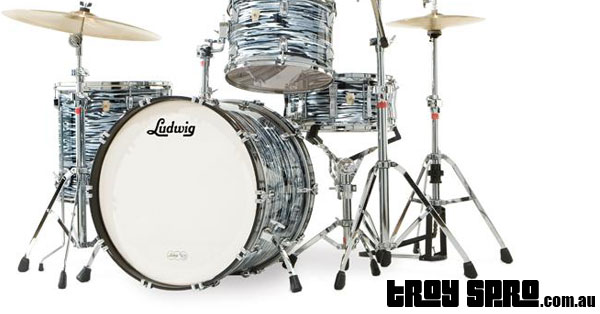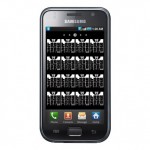Although I’m not a drummer as such, I have dabbled over the years playing when I could and also programmed drums for songs for live sets, so in writing about drums this account is simplistic and not to over involved.
Drums have been basically unchanged for thousands of years and are the world’s oldest instrument.
They form part of the percussion group of instruments and come in all shapes, sizes and makes, not only in the current band set drum kit set of today.
Also, as electronics have become more and more normal, also peoples thirst for free a drum kit that doesn’t take up any room, we now have a lot of virtual drums for mobile phones and pads, electronic drum kits (Yamaha drum kit and Traps drum kit to name a couple), practice pads, synthesizer drum sets, computer drum sets and drum machines to name a few, all of these have their place, sound great and have given the gift of percussion to many a uncoordinated and sometimes unmusical music composer, they also can have in the electronic drum kit world, different kits for different music genres ie; Dubstep drum kit, Techno House drum kit, Reggae drum kit as a few examples.
Although there is a rich history of the actual drum, which is a member of the membranophones group of instruments due the membrane (Drum skin) that stretches over the shell, I’ll mainly talk about the standard rock drum kit that is used by musicians all over Australia and the World.
The standard drum kit as we know it started to evolve around the 1900’s, the foot pedal for the bass drum had started to be used around 1890.
Ludwig Co patented the first bass drum pedal in 1909 which was the start of the modern bass drum being the centre piece of the modern day drum kit.
When World War 1 hit the drum kit had large marching bass drums and lots of other percussive instruments suspended around them, they were, in this time used mainly by Jazz musicians, the bass drum consoles were developed to hold Chinese Tom Toms and have swing out stands for snare drums and cymbals, on top of the consoles were “contraptions” which was shortened to “trap” which were used to hold whistles, cowbells etc, drum kits from this point coined the name “Trap Kits”, Hi hats started appearing from around 1926, it would have been an exciting time watching all these little improvements roll out and the music and musicians change and get better and better.
1930’s saw the basic four piece drum set become standard, Bass Drum, Snare, Tom Tom and Floor Tom.
From then on the drum kit evolved slowly but surely as more people started playing and the manufacturers of drum kits got better at what they did too.
Bigger drum kits started to appear throughout the 1960’s and by the 1980’s the drum kits were out of control with size and also what they could do, it was getting to the point where you could throw out a drum stick anywhere and you would hit a drum or a cymbal, 1990’s and beyond saw the drum kit minimalise again though and become more computer and electronics based too.
Drum kits now come in all shapes and sizes depending on what music you are looking at creating, how good you are on the drums (Keep it simple or have an 80 piece kit….), but basically have the same percussive outcome, the drums are measured in either “depth x diameter” or “diameter x depth” and are usually in inches.
High hats and cymbals also were added, taken away and come in all shapes and sizes, as well as the evolution of the drum stick which also has so many varieties.
Also, if you haven’t been involved around music much, let alone drummers, the drum kits can be tuned which is an art in itself, having an ear for tuning drums and knowing how to do it takes a lot of practice, so learn off someone before you get out the drum key and have a good old fashioned crack at it yourself as you can do some permanent damage to the skins and your hardware too.
Below is a quick rundown of what the different parts of the basic drum kit are.
What is a Snare Drum ::
The snare drum is the centre of the drum kit, it usually provides the strongest, crisp, regular accents in music, and it is played by the left hand (For right handed drummers) and is used in drum rolls and fills.
The snare drum is always a double headed drum, with rattles of gut, metal wire or synthetics stretched across one or both heads (These rattles are called “Snares”), this gives the snare its cracking sound on the back beat, also it is the drum that is on a stand by itself nestled into the high hats, toms and the bass kick drum.
There are many types of snares for different types of music and uses, Orchestral snares, Drum kit snares, Piccolo snares (Thinner depth = crisp crack sound), Soprano snares, Popcorn snare and Firecracker snares to name a few.
You can read more about the History of the Snare here :: Snare Drum History
What is a Tom Drum ::
Toms or Tom Toms are drums without snares on the bottom of them (See Snare Drum) and are usually the most plentiful drum in a drum kit as in there is usually 2 or more and so they provide sound for most of the drum fills and if your that way inclined, drum solo’s.
The different types of Toms include the Floor Tom, Double headed rack Tom, Single headed concert Toms, Gong bass drum and Rototoms to name a few.
They usually vary in size and depth and are tuned differently too to give that classic drum roll sound.
These are the drums that either sit on the floor next to the bass drum upright and the also on top of the bass drum too.
What is a Bass Drum ::
Bass drum, Kick drum or whatever you may call it is the drum used to keep time, it is the low sound you hear throughout most music and generally in songs it sits on the first and third beats of the bar.
It is quite a big drum and sits horizontally and has feet to hold it up, attached is the kick or foot peddle which strikes the drum to make the sounds.
These also come in a lot of different sizes, but generally is an integral part of the drum kit and the sound of the kit too.
What are Cymbals ::
Cymbals usually are scattered around a drum kit and are used, other that the High Hats or the Ride Cymbal to emphasise notes and sections of songs.
There are the High Hats, Ride, Crashes, China and Splash Cymbals to name a few.
They usually are on stands too and tilted so you can easily hit them throughout your performances.
More on Drums and Drum Kits ::
I could go on forever though about all the parts of the drum kits and also the accessories too, but the above will give you a simple run down on drums and parts that make up drum kits.
Some of extra things that come to mind that I could write about would be;
Other instruments that make up Drum Kits :
Wood block, Cow bell, Tambourine, Timbales, Xylophone, Chimes, Triangles etc.
Electronic Drum Kits :
Triggers, Pads, Programming, Modules, Sensors etc.
Drum hardware :
Stands, Cymbal stands, High hat stands, Bass drum feet, Snare drum stand, Bass drum pedal, Drum rack etc.
Configurations of Drum Kits :
Three piece drum set, Four piece drum set, Five piece drum set etc.
Drum and Drum Kit Accessories :
Drum sticks, Muffles, Drum cases, Microphones, Drum screens, Carpets, Drumming practice equipment, Metronomes, Drummers etc.
Recording of Drums :
What, where, how etc.
What to look for when buying a Set of Drums or Drum Kit ::
A good a place as any to start if you are new to playing is “How much am I willing to spend?”
If you only have a few hundred set aside for a small 3 piece drum kit, it will usually be a second hand one or a cheap, not easy to tune kit, on the good side it will be a non expensive set up to see if you like drumming and have the drive to carry on drumming and also be a gauge to see if your neighbours can handle the noise too.
Also, as drumming and buying a kit is a big commitment compared to throwing money at a crappy old acoustic guitar, go and talk to as many people as you can to see if its right for you, asking questions is the best way to see if drumming is right for you.
For anyone else but a beginner, you probably know your stuff a little better, you’d know how to research drum kits and about them already and so it comes down to how much you want to spend and what you are using it for, playing along with a few AC DC tracks in the shed or using it in your live sets at the local pub with your Nirvana cover band each have their own needs and features that will be needed for playing.
I hope you enjoyed this brief insight into drum kits and what they are.
Now go out and annoy your neighbours!
You can read more about drums and drum kits here :: What is Drumming?


